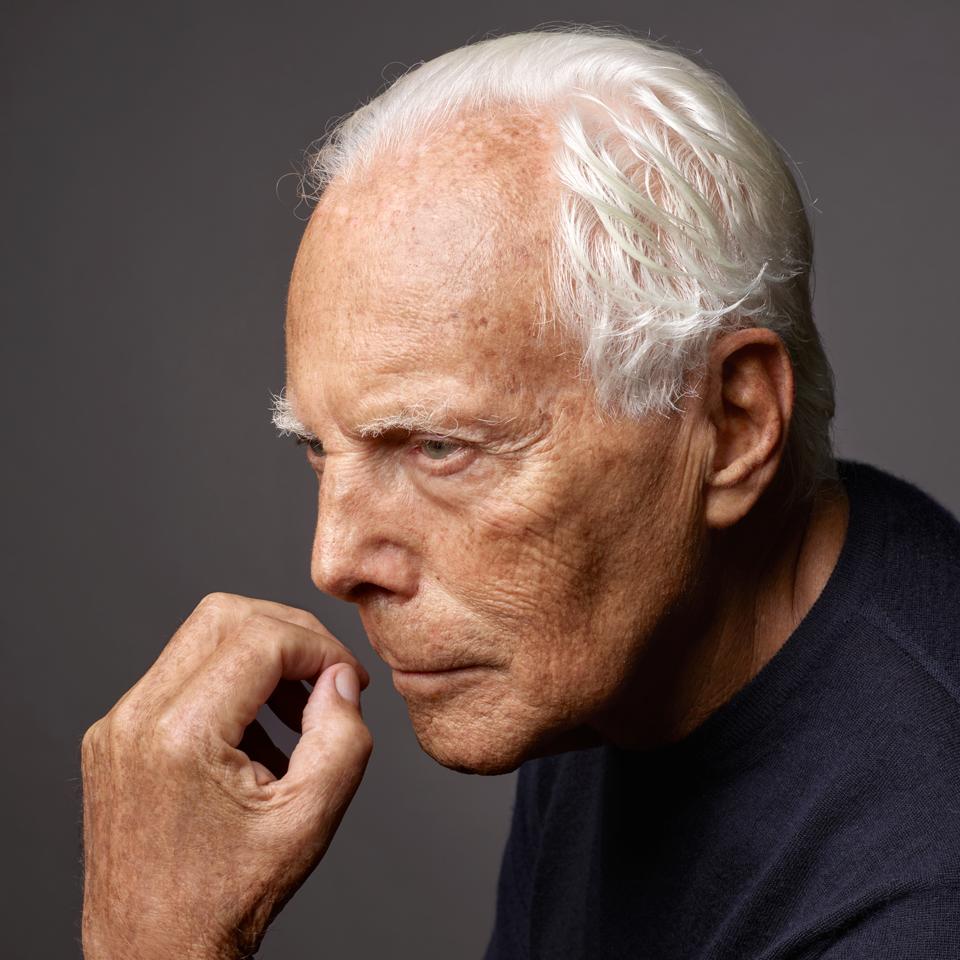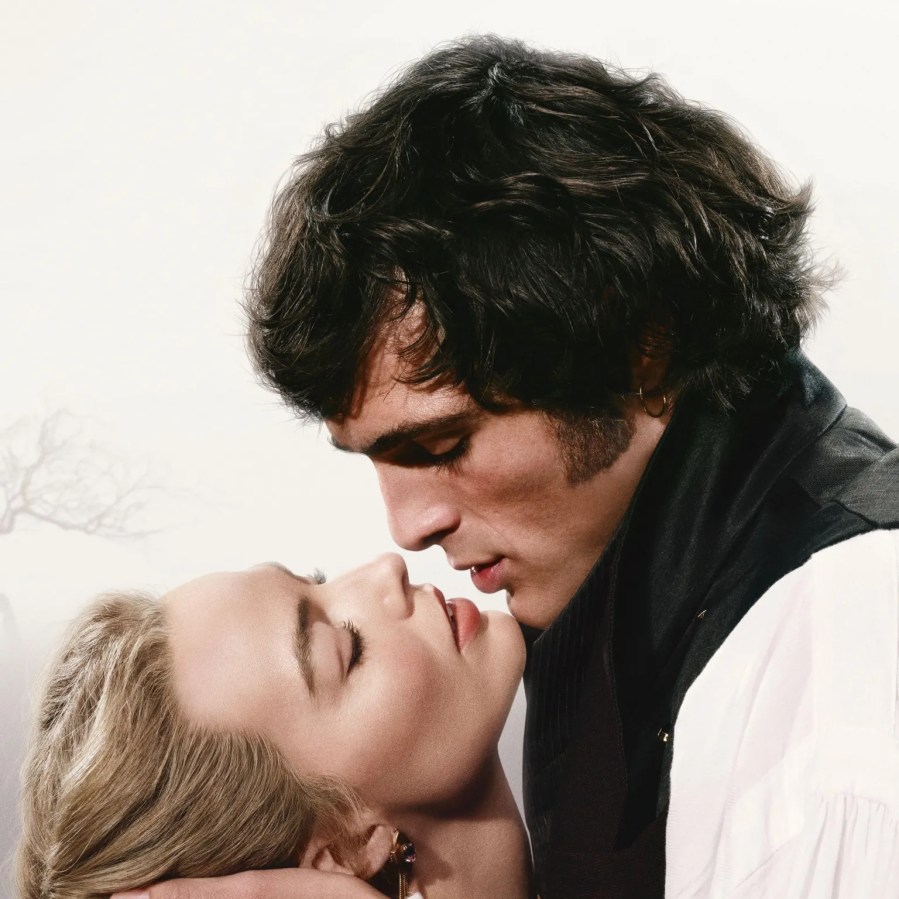Giorgio Armani, the iconic fashion designer who had redefined luxury fashion since the late 1970s, died on September 4 at age 91. The reason for his death was not disclosed in a company press statement, but Armani had missed the Milan and Paris fashion weeks in June and July due to unspecified health issues and had reportedly been recovering at home following a hospital stay.

Giorgio Armani
Martin Schoeller for Forbes
After starting out as a low-level buyer at a department store in Milan, Italy in the late 1950s, Armani went on to launch his own brand in 1975 and became one of the world’s leading designers and luxury fashion moguls.
Forbes estimates Armani was worth $12.1 billion at the time of his death, largely thanks to his 99.9% stake in his eponymous fashion house. The remaining 0.1% is owned by the Milan-based Giorgio Armani Foundation, which he established in 2016 to “ensure continuous guidance for the company’s future management.” The company reported EBITDA (earnings before interest, taxes, depreciation and amortization) of $412 million on $2.4 billion in revenues in 2024, a 24% and 5% drop, respectively, compared to the previous year. Armani also owned a 2% stake in eyewear giant EssilorLuxottica worth $3.2 billion when he died, as well as hundreds of millions of euros worth of real estate and a $29 million yacht named Main.
“In this company, we have always felt like part of a family. Today, with deep emotion, we feel the void left by the one who founded and nurtured this family with vision, passion, and dedication,” read the press statement by his family and employees. “But it is precisely in his spirit that we, the employees and the family members who have always worked alongside Mr. Armani, commit to protecting what he built and to carrying his company forward in his memory, with respect, responsibility, and love.”
In a March 2021 interview with Vogue, Armani said that he planned to pass down the closely-held company to his family and closest business associate, naming his niece Roberta Armani and his right-hand man Leo Dell’Orco as his heirs. He also said that keeping the brand independently and privately owned was “not so strictly necessary,” hinting at the possibility of selling to or partnering with another company. In an interview with the Financial Times on August 29, days before his death, he said that he planned for his succession to be a “gradual transition” to Dell’Orco, members of his family and his working team.
“I always try to maintain a sense of reality and ensure that I surround myself with the right people, who understand the times in which we live,” he told Forbes in 2017 for the magazine’s 100-year-anniversary issue. “In this line of work, my team is crucial. I’m the one who decides, but I like having lots of other people with whom I can discuss ideas, as this helps with the creative process.”
Giorgio Armani was born in the northern Italian city of Piacenza in 1934, where he attended high school and studied medicine for two years at the local university before leaving to complete his military service. In 1957, he abandoned the idea of becoming a doctor and instead decamped to Milan, where he took a job as a merchandiser and window dresser at the department store La Rinascente.
He quickly developed a passion for the fashion industry, and later moved on from La Rinascente to work as a designer for high-end stylist Nino Cerruti. After years of designing for Cerruti and freelancing for other companies, he decided to set up his own fashion house in 1975 with his partner, Sergio Galeotti, who reportedly convinced him to raise funds for the new outfit by selling his Volkswagen Beetle. On July 24, 1975, the pair founded Giorgio Armani, offering lines that broke the mold by dressing women in power suits and men in women’s fabrics. In his early years as a designer, Armani began sketching his designs on a black background with a pencil and crayons, sometimes drawing directly on fabric.
His next big break came in 1980, when he was asked to design Richard Gere’s wardrobe in the blockbuster hit movie American Gigolo. Over the years, Armani expanded to offer accessories, perfume, makeup and sportswear, as well as lower-priced lines such as Emporio Armani and Armani Jeans. Tragedy struck in 1985 when his partner Sergio Galeotti died of AIDS, but Armani pressed ahead. As the business grew, so did his stature: Armani was appointed a knight of the Order of Merit of the Italian Republic, Italy’s highest civilian honor, in 1987; he was later named a goodwill ambassador for the United Nations High Commissioner for Refugees in 2002 and joined the French Legion of Honor in 2008. That same year, he also dipped his toes into sports ownership by acquiring the Olimpia Milano basketball team.
During his long career in fashion, Armani pioneered trends including putting haute couture shows on the internet, when he partnered with msn.com to live-stream the unveiling of his summer collection in Paris in 2007. In February 2020, he was the first major designer to cancel a fashion show due to the Covid-19 pandemic, deciding instead to host his Milan show virtually. One month later, Armani donated about $2.4 million (2 million euros) to hospitals in Milan, Rome, Bergamo, Piacenza and Versilia and to the Italian civil protection agency. Weeks after the country went into lockdown to combat the virus, Armani also converted all production at the company’s Italian factories to make medical overalls.
“As history teaches us, new opportunities are born from the deepest moments of crisis,” he told Forbes in March 2020.
Look back on the week that was with hand-picked articles from Australia and around the world. Sign up to the Forbes Australia newsletter here or become a member here.


